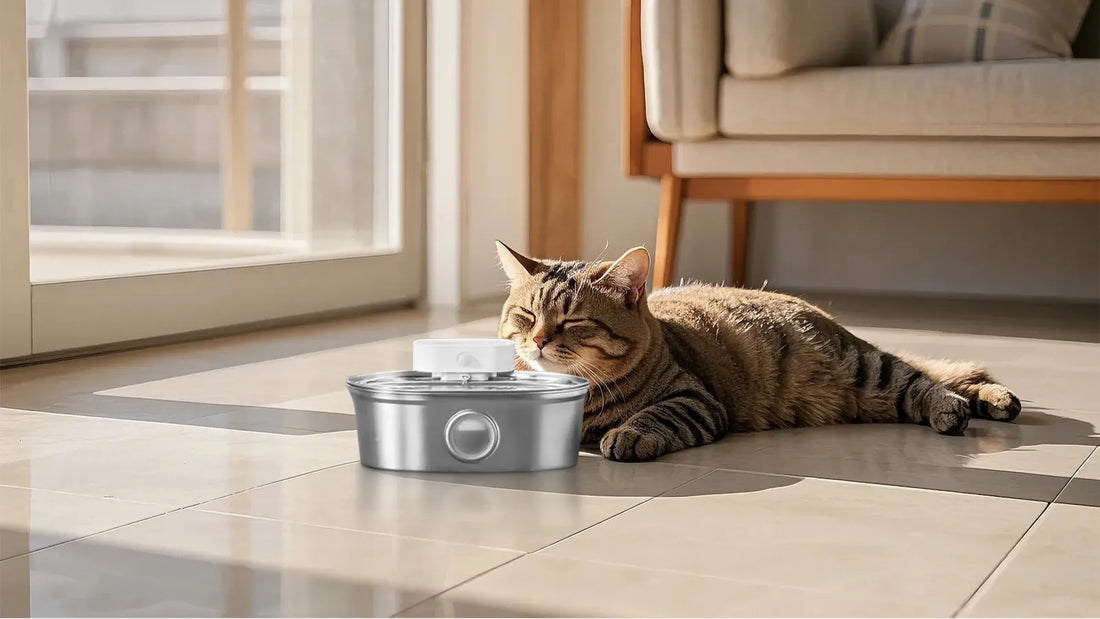If you've ever found yourself wondering, 'Why does my dog flip his food bowl?' you're not alone. This quirky behavior can be both amusing and frustrating for pet owners. While it might seem like a harmless habit, it could also indicate underlying issues that need attention. Let's dive into the reasons behind this behavior and explore effective solutions to keep your dog's mealtime calm and mess-free.
Why Do Dogs Flip Their Food Bowls?
Understanding why your dog flips his food bowl is the first step toward addressing the behavior. Dogs are intelligent creatures, and their actions often have specific motivations. Here are some common reasons why your furry friend might be turning his bowl upside down:
- Boredom: Dogs need mental and physical stimulation. If they're not getting enough exercise or playtime, they might resort to flipping their food bowl as a way to entertain themselves.
- Attention-Seeking: Dogs are social animals and crave interaction. If flipping the bowl gets a reaction from you, even if it's negative, they might repeat the behavior to gain your attention.
- Curiosity: Some dogs are naturally curious and enjoy exploring their environment. Flipping the bowl could be their way of investigating how it works or what happens when they do it.
- Discomfort: If the bowl is too deep, too shallow, or made of a material that feels uncomfortable, your dog might flip it to find a more comfortable way to eat.
- Instinctual Behavior: In the wild, dogs might flip objects to uncover hidden food or to protect their meal from other animals. This instinct could carry over into domestic settings.
How to Stop Your Dog from Flipping His Food Bowl
Now that you have a better understanding of why your dog might be flipping his food bowl, let's explore some practical strategies to curb this behavior:
1. Provide Mental and Physical Stimulation
If boredom is the root cause, increasing your dog's mental and physical activity can make a big difference. Try incorporating more walks, playtime, and puzzle toys into your dog's daily routine. A tired and mentally stimulated dog is less likely to engage in destructive behaviors like flipping his bowl.
2. Use a Heavy or Non-Slip Bowl
Switching to a heavier bowl or one with a non-slip base can make it more difficult for your dog to flip. Look for bowls specifically designed to stay in place, even if your dog tries to move them. This simple change can often resolve the issue without much effort.
3. Feed Smaller Portions
Some dogs flip their bowls because they're trying to access food that's stuck at the bottom. Feeding smaller portions more frequently can ensure that your dog can easily reach all the food without feeling the need to flip the bowl.
4. Train Your Dog to Stay Calm During Meals
Training your dog to remain calm during mealtime can help reduce bowl-flipping behavior. Start by teaching basic commands like 'sit' and 'stay' before placing the bowl down. Reward your dog for calm behavior and gradually increase the duration they must wait before eating.
5. Address Underlying Anxiety or Stress
If your dog's bowl-flipping is linked to anxiety or stress, it's important to address the root cause. Consider consulting a veterinarian or a professional dog trainer to identify and manage any underlying issues. Techniques like desensitization and counterconditioning can be effective in reducing anxiety-related behaviors.
6. Experiment with Different Feeding Methods
Sometimes, changing the way you feed your dog can make a difference. For example, using a slow feeder or a puzzle feeder can make mealtime more engaging and reduce the likelihood of bowl-flipping. Alternatively, feeding your dog by hand or using a different type of dish might also help.
When to Seek Professional Help
While most cases of bowl-flipping can be resolved with the strategies mentioned above, there are situations where professional help might be necessary. If your dog's behavior is persistent, severe, or accompanied by other concerning signs (e.g., aggression, changes in appetite, or lethargy), it's important to consult a veterinarian or a certified dog behaviorist. They can provide tailored advice and ensure that there are no underlying health issues contributing to the behavior.
Preventing Future Bowl-Flipping Incidents
Once you've successfully addressed your dog's bowl-flipping behavior, it's important to take steps to prevent it from happening again. Here are some tips to keep in mind:
- Consistency is Key: Stick to the strategies that worked for your dog and maintain a consistent routine. Dogs thrive on predictability, and a stable environment can help reinforce positive behaviors.
- Monitor Your Dog's Behavior: Keep an eye on your dog during mealtime to ensure that the bowl-flipping behavior doesn't resurface. Early intervention can prevent the habit from becoming ingrained.
- Continue Providing Enrichment: Regularly introduce new toys, activities, and challenges to keep your dog mentally and physically engaged. A stimulated dog is less likely to engage in unwanted behaviors.
By understanding the reasons behind your dog's bowl-flipping and implementing the right strategies, you can create a more peaceful and enjoyable mealtime experience for both you and your furry friend. Remember, patience and consistency are key to helping your dog overcome this behavior. With time and effort, you'll be able to enjoy mealtime without the mess and frustration of a flipped food bowl.
If you're ready to transform your dog's mealtime habits and put an end to the flipped bowl chaos, start implementing these tips today. Your dog will thank you, and you'll enjoy a cleaner, calmer feeding routine. Don't let a flipped bowl ruin your day—take action now and see the difference it can make!













